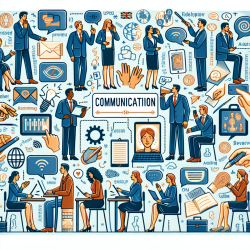In the ever-evolving field of speech-language pathology, professionals continually seek innovative strategies to enhance communicative interactions, particularly between aided (those who use Augmentative and Alternative Communication (AAC) devices) and unaided speakers. The research presented in "Sharing Communication: Strategies for Communicative Interaction Between Aided and Unaided Speakers" offers invaluable insights into this aspect of communication, providing a wealth of knowledge for practitioners aiming to improve their skills and encourage more effective communication.
This comprehensive resource, which includes a 23-minute videotape and a 50-page manual, is designed for a broad audience including family, friends, professional caregivers, and anyone who regularly interacts with AAC users. Its primary goal is to facilitate conversations that are both more comfortable and more successful, thereby enhancing the quality of life for individuals who rely on AAC systems.
The videotape and manual discuss several key strategies for improving communicative interactions:
- Encouraging Equal Participation: It's crucial for both parties to share the conversation equally. The research suggests methods for aided speakers to assert their presence in a conversation and for unaided speakers to ensure they're providing adequate opportunities for their counterparts to contribute.
- Enhancing Communication Rate: Given that communication with an AAC device can be slower, strategies for speeding up the exchange without sacrificing understanding are highlighted. This includes suggestions for unaided speakers on how to adjust their pacing and for aided speakers on how to efficiently convey their messages.
- Avoiding and Repairing Breakdowns: Communication breakdowns can be frustrating for both parties. The resource offers strategies for recognizing when breakdowns occur and tips for both aided and unaided speakers to repair these disruptions effectively.
Moreover, the videotape employs real-life scenarios to illustrate these points, making the content relatable and easier to understand. These vignettes, combined with quotes from AAC users, provide a powerful insight into the common challenges and solutions in AAC communication.
One of the standout features of this resource is its sensitivity to the initial discomfort that can accompany interactions with an AAC user. It acknowledges these feelings and demonstrates how they can be overcome through familiarity and understanding. This aspect is particularly beneficial for professionals and caregivers who are new to working with AAC systems.
The accompanying manual not only reiterates the information presented in the video but also expands upon it. It includes a suggested outline for a workshop, incorporating activities such as role-playing and group discussions to reinforce learning. Additionally, a brief list of resources and a selected bibliography are provided for those interested in further exploration of the topic.
For speech-language pathologists, educators, and caregivers, this resource serves as a vital tool in promoting more effective communication strategies between aided and unaided speakers. By implementing the outcomes of this research, practitioners can significantly improve their ability to support individuals who use AAC, enhancing both the quality and efficacy of communicative interactions.
In conclusion, "Sharing Communication: Strategies for Communicative Interaction Between Aided and Unaided Speakers" is an essential resource for anyone looking to improve their understanding and skills in facilitating communication with AAC users. Its practical advice and real-world applicability make it a must-have for professionals across the spectrum of speech-language pathology and related fields.
To read the original research paper, please follow this link: Sharing Communication: Strategies for Communicative Interaction Between Aided and Unaided Speakers (videotape and manual).










